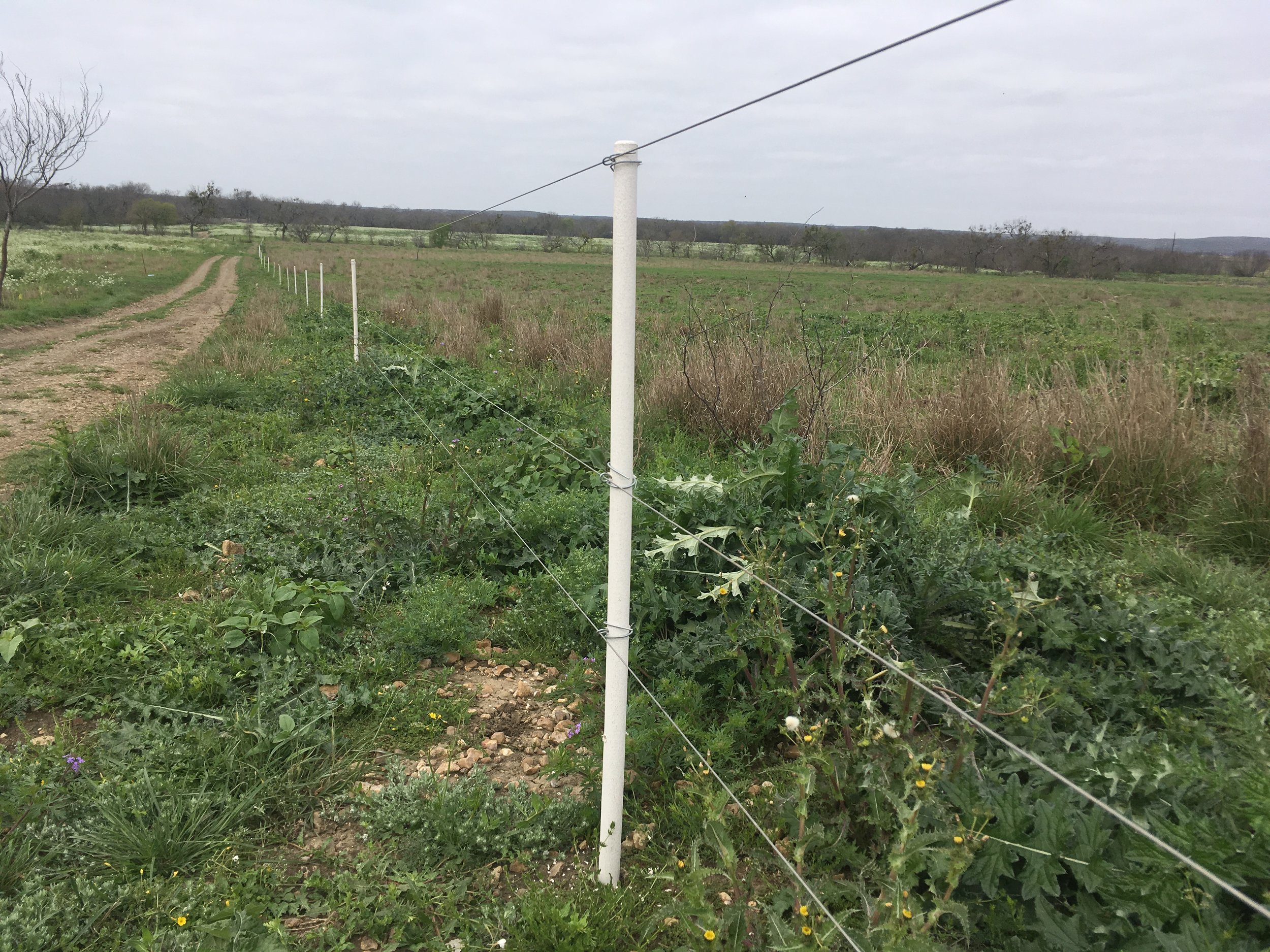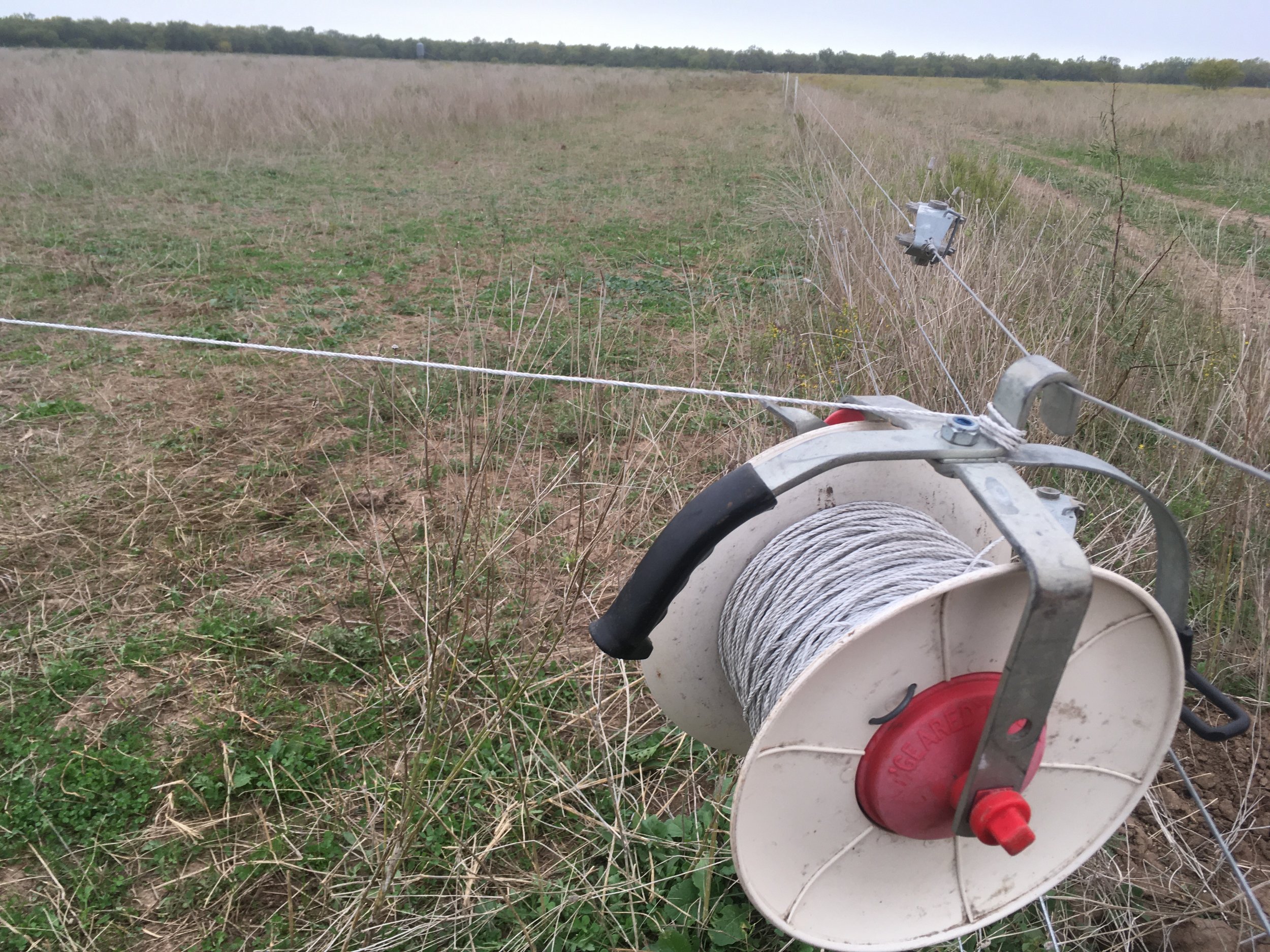Hi-tensile galvanized steel wire vs. aluminum wire for electric fences
I was once a really big believer in aluminum wire for my permanent and semi-permanent electric fencing projects. It has several advantages including a lifetime guarantee against rust, maximum conductivity for carrying power over long distances and is ideal for long leadoffs with very high powered energizers. The bigger issue for me is the cost. I buy mine from Gallagher and a 4000 ft roll of 12.5 gauge runs about $240.00 right now, which isn’t cheap. Another issue is the breaking strength is relatively low. It doesn’t take much for anything to break this wire. We are constantly repairing some of our old aluminum wire fences.
Here are some bullet points for aluminum wire:
Carries a lifetime guarantee against rust,
Conducts electricity four times better than steel wire,
Light and easy to install. Aluminium is one-third the weight of steel,
Ideal for long lead out with very high power Energizers,
Greater flexibility. Can be hand twisted and tied without the use of special tools,
Easy to re-spool and ideal for controlled grazing.
Up to 4000 ft coils
Resistance 10.3 ohms/km
Pro-tips for aluminum wire;
It’s a good wire for fences near creeks and water gaps. I call these “wash away fences.”
Can be used for more temporary fencing solutions because you can easily re-spool when needed. I use cheap, orange power cable spools that can be purchased at almost any hardware store.
In recent years all of my new fence construction is with hi-tensile steel wire. I use 180 KSI wire with Class 3 galvanization. Most farm and ranch supply stores either carry this wire or can order it for you. It typically runs about $70 per 4000 ft. I order mine from my local Lyssy & Eckel feed store. It’s slightly lower tensile strength is an excellent choice for those who prefer the traditional hand-knotting methods. Throughout the world, 180 KSI wire is the standard for both electric and non-electric fences. Class 3 galvanized coating resists rust up to 3-times longer than traditional farm store wire. The price and quality make this wire very popular among fence builders and graziers. Do not purchase wire that is over 200 KSI because it’s simply too brittle, which makes hand tying knots virtually impossible. In the case of wire that is 200 KSI or more you will need to use gripples or crimps.
Here are some bullet points for steel hi-tensile wire:
Class 3 galvanized high-tensile wire
180 KSI, 12½ gauge
4,000' coil
Very heavy spools
Need a spinning Jenny to payout the wire. I use this Wire Payout Spinner from Gallagher.
Hand-knot or crimp, but difficult to do for beginners.
Ideal for permanent perimeter and interior fences.
Does not easily re-spool.
Minimum break strength = 1,385 lbs, this stuff is really hard to break.
Pro-tips for hi-tensile wire:
Don’t crimp the wire. This makes it weak and likely to break.
Don’t over tighten the wire. It should be good and tight, but not necessary to crank on it.
Build good, strong wood h-braces. I wrote a blog about how to build and h-brace a while back.
Learn how to tie end knots and splice. It will save you money versus using crimpers.
Questions or comments leave them below or send me an e-mail to mail@parkercreekranch.com.






